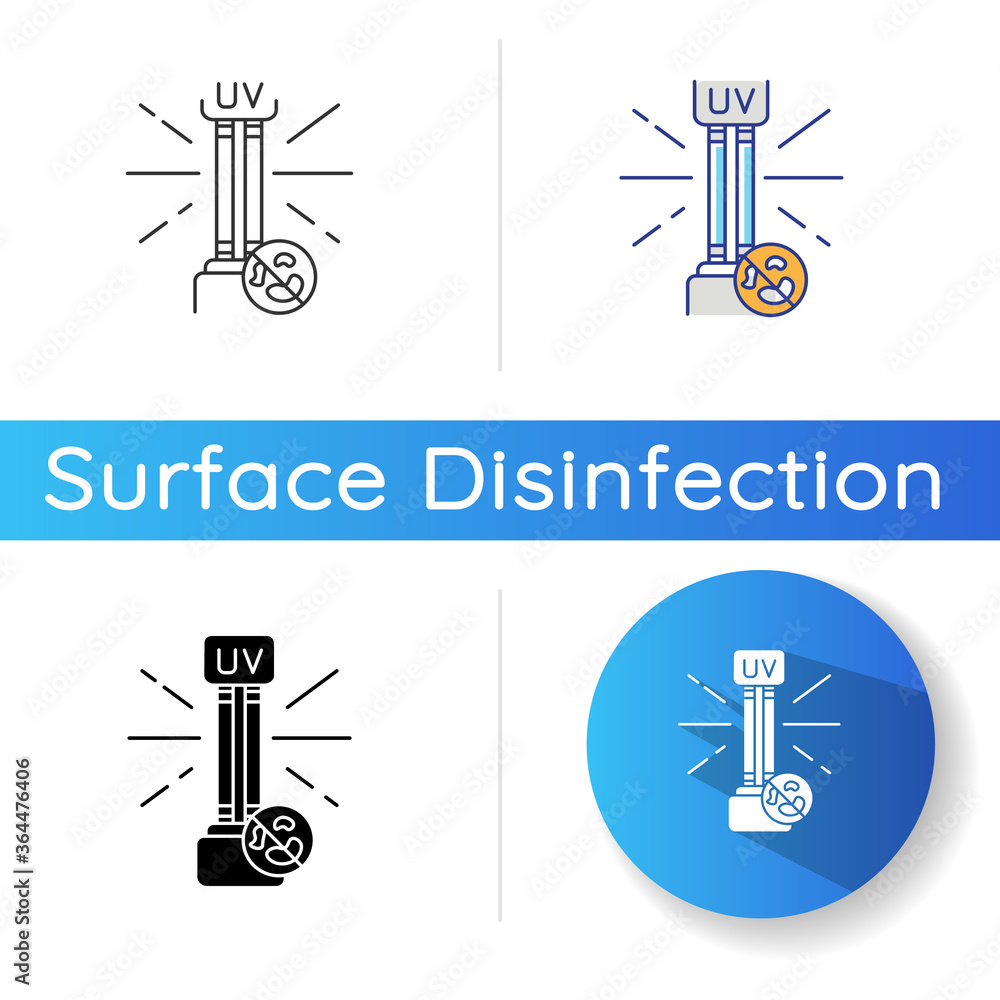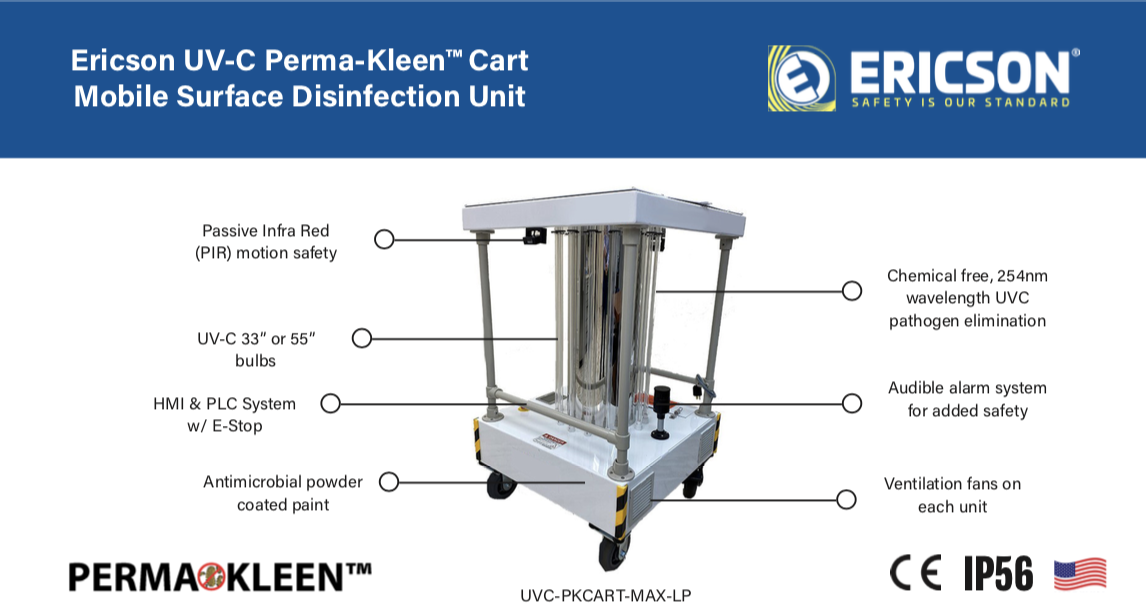UV Sanitation: The Cutting-Edge Technology Transforming Cleanliness Practices
In the world of cleanliness practices, one innovation has arised as a game-changer: UV disinfection. From medical care setups to food processing, UV sanitation is making its mark in various sectors.
Just How UV Sanitation Works
UV sanitation functions by making use of ultraviolet light to damage or suspend microorganisms, supplying a very efficient and chemical-free method of hygiene. This technology utilizes the power of short-wavelength UV-C light, which is capable of harming the DNA and RNA of microorganisms, hence rendering them incapable to replicate and cause harm.
The process starts with the installation of UV sanitation systems, which contain UV lamps that give off UV-C light. These lamps are tactically put in locations where microbial contamination is a concern, such as water treatment plants, health centers, labs, and food handling centers.
When microorganisms are revealed to UV-C light, the photons penetrate their cell walls and reach the DNA and RNA within. The high-energy UV-C photons interfere with the genetic product by producing bonds in between nearby nucleotides, causing the formation of thymine dimers. These dimers prevent the bacteria from duplicating, providing them harmless.
UV sanitation is very efficient versus a wide variety of bacteria, including viruses, parasites, and bacteria. It is particularly efficient versus waterborne microorganisms like E. coli, Giardia, and Cryptosporidium. Furthermore, UV disinfection is a chemical-free technique, removing the requirement for possibly damaging anti-bacterials and minimizing the threat of hazardous sanitation byproducts.
Benefits of UV Sanitation
UV disinfection provides countless benefits in the area of hygiene, making it a highly liked technique for efficiently removing dangerous microorganisms. Unlike typical disinfection methods that count on chemicals, UV disinfection utilizes ultraviolet light to ruin the DNA of microbes, making them incapable to replicate and cause infections.

UV sanitation is also highly functional in its applications. It can be used in different settings, consisting of healthcare facilities, colleges, food processing facilities, and water therapy plants. UV sanitation systems can be conveniently incorporated right into existing hygiene techniques, providing an added layer of defense against contagious conditions.
Along with its efficiency and versatility, UV disinfection is also eco-friendly. It does not create any type of harmful by-products or residues, making it a safe and lasting technique for hygiene - uv surface disinfection. UV disinfection requires very little maintenance and has a long lifespan, resulting in cost savings in the lengthy run.
UV Disinfection in Healthcare Settings
In healthcare setups, UV sanitation has emerged as a groundbreaking technique for efficiently eliminating hazardous microbes. UV disinfection works by emitting ultraviolet light at a certain wavelength that is deadly to germs, viruses, and other microbes.
Firstly, UV sanitation is a non-chemical technique, making it an eco-friendly alternative compared to typical disinfection methods that commonly entail making use of rough chemicals. Using UV light gets rid of the demand for chemical anti-bacterials, minimizing the risk of hazardous residue or chemical exposure to both clients and healthcare employees.
Additionally, UV sanitation is very effective in eliminating a large web link range of microbes, including drug-resistant bacteria such as MRSA and C. difficile. It offers a constant and reliable disinfection process, ensuring that all surfaces and tools are extensively sanitized, even in hard-to-reach areas.

UV Disinfection in Food Handling
The application of UV disinfection expands beyond medical care setups and discovers considerable value in the world of food processing. uv surface disinfection. UV disinfection technology is coming to be significantly popular in the food sector as a result of its capacity to effectively get rid of harmful microorganisms and improve food security
One of the main advantages of UV sanitation in food processing is its capacity to target a large range of bacteria, consisting of bacteria, molds, and infections. By utilizing UV light at certain wavelengths, it is feasible to disrupt the DNA and RNA of these pathogens, making them incapable to recreate or trigger injury. This modern technology can be related to numerous phases of the food handling chain, including surface sanitation, equipment sterilization, and water treatment.
UV sanitation supplies a chemical-free and non-thermal method of sanitizing food. Unlike typical sanitation techniques that depend on chemicals or warm, UV modern technology does not leave any kind of deposit or alter the taste, texture, or dietary worth of the food. This makes it a perfect solution for sectors that need stringent adherence to top quality standards.
Furthermore, UV sanitation systems are very easy to operate and install, requiring marginal maintenance. They can be incorporated into existing processing lines without triggering significant disruptions to the manufacturing process. In addition, UV systems have a fast treatment time, allowing for continuous processing and lowering downtime.
The Future of UV Disinfection

One location where UV sanitation is anticipated to make considerable innovations remains in the area of healthcare. With the rise of antibiotic-resistant germs and the demand for much more efficient sanitation methods, UV light has the prospective to play a crucial duty in reducing healthcare-associated infections. UV disinfection systems have a peek at this website can be used to decontaminate surfaces, equipment, and even the air in healthcare facilities, helping to avoid the spread of harmful microorganisms and enhance person safety.
Another sector that could gain from improvements in UV sanitation technology is the food industry. UV light has already verified to be a reliable method for decontaminating food and decreasing the risk of foodborne diseases. As technology enhances, we can anticipate to see a lot more economical and effective UV sanitation systems being implemented in food handling plants, making sure that the food we take in is safe and without unsafe microorganisms.
Conclusion
In verdict, UV disinfection is an advanced technology that is transforming cleanliness methods in medical care settings and food handling. By making use of UV light to kill or shut off microbes, it supplies various advantages such as effectiveness, safety and security, and efficiency. With continuous advancements in this field, UV disinfection holds wonderful prospective for the future of hygiene, providing a dependable and lasting solution for preserving tidy and hygienic atmospheres.
UV disinfection is a chemical-free technique, removing the demand for potentially unsafe disinfectants and lowering the danger of unsafe disinfection by-products.
Unlike standard sanitation techniques that rely on chemicals, UV disinfection makes use of ultraviolet light to ruin the DNA of microorganisms, providing them not able to duplicate and create infections. Unlike conventional disinfection methods that depend on chemicals or warm, UV innovation does not leave any residue or alter the taste, texture, or nutritional value of the food. As innovation enhances, we can anticipate to see extra economical and efficient UV sanitation systems being applied in food processing plants, making sure that the food we take in is secure and complimentary from damaging bacteria.
In conclusion, UV sanitation is a cutting-edge technology that is transforming sanitation methods in medical care setups and food handling.